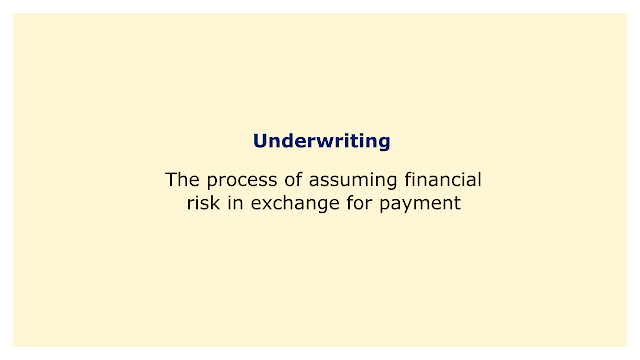 |
| Image: Moneybestpal.com |
Underwriting is the process of assuming financial risk in exchange for payment. It is frequently employed in investments, insurance, and loans. When determining how much risk to absorb and at what cost, underwriters assess each transaction's risk.
Fair rates, premiums, and pricing are established through underwriting for various financial products. Here are some examples of underwriting in different contexts:
In the financial industry, underwriting plays a crucial role in balancing the risks and rewards of a transaction for all parties involved.
- Loan underwriting: To evaluate if a borrower has the ability and willingness to repay a loan, underwriters examine their credit history, income, assets, and collateral. Based on the level of risk, they also decide on the loan's terms and interest rate.
- Insurance underwriting: The health, way of life, profession, and other characteristics of applicants are evaluated by underwriters to ascertain how likely they are to make claims. In accordance with the risk level, they also determine the rates and coverage limits.
- Investment underwriting: By issuing securities like stocks or bonds, underwriters assist businesses in raising finance. They perform due diligence on the company's finances, the state of the market, and regulatory needs. They further purchase the securities from the corporation and mark them up before offering them to investors.
In the financial industry, underwriting plays a crucial role in balancing the risks and rewards of a transaction for all parties involved.
